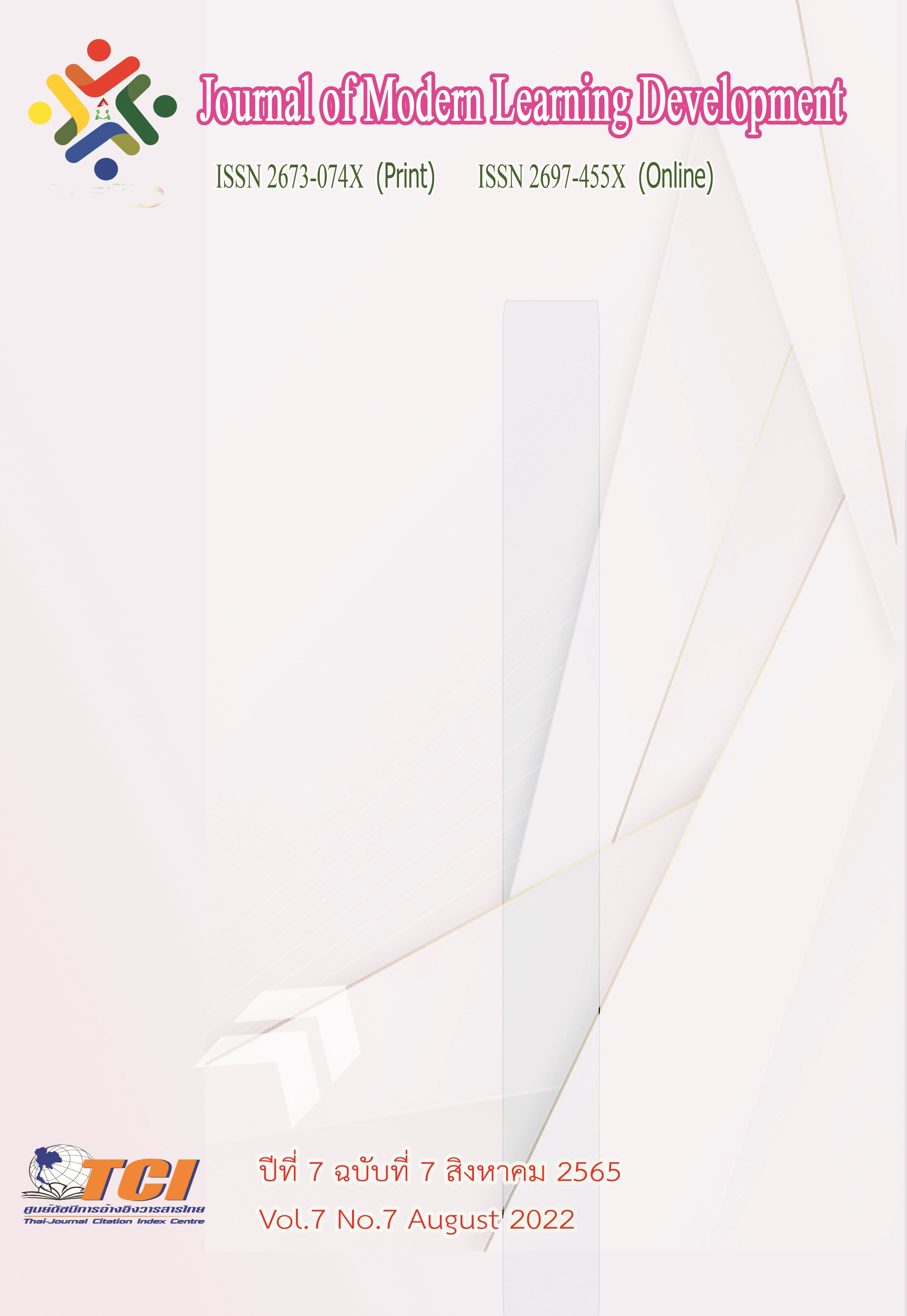Process Transfer of Sustainable Solving of Poverty Problem Case Study Ban Nong Khae Amphoe Nong Khae sub district, Rasi Salai district, Sisaket Province.
Main Article Content
Abstract
The objective of this research were aimed to transfer propelling process of sustainable solving of communities’ poverty problem in the area of Sisaket Province. This research and development methodologies were applied using participatory action research methods. The tools used in the study were document studies, interviews and group discussions. The population and sample consisted of 10 community leaders from Ban Nong Khae, and 100 People and members of community enterprise groups living in Ban Nong Khae Village, Village No. 1 and Village 17. To study the cause of the problem alternative solution action Post-practice notes, observations, reflections and exchanging knowledge analyze the data by descriptive.
The research findings were: The spatial poverty situation according to the analysis of internal environment was found that the strengths of communities were multiculturalism, strong community leaders, various independent occupations, source of community economy with businesses of both communities and private companies and transforming from the agricultural communities to more developed urban communities. In contrast, the weaknesses of the communities were various societies due to communities transforming, more temptation, lack of food sources and funding sources, most of them had formal and informal debts, low level of education, uncertain occupations and incomes, lack of negotiating power and being unable to accessing the state welfare. Moreover, the external environment was found that the community’ s opportunities were from public and private sectors which were economic sources conducing to creating occupations and generating incomes as well as supports from local political parties and politicians. However, the limitations of villagers were reaching the source of government loans and welfares, lacking of support in education and occupation from government agencies, lacking of labor protection and social welfare. Also, the state policy for solving poverty problem was not conducive to local administration and no opportunity to transfer wisdom.
The implementation of propelling of sustainable solving of poverty problem by creating a participatory plan consisted 6 sets of operations: 1) Provincial committee, 2) District level coordinators, 3) Sub-district committee, 4) Lecturers, 5) Sub-district facilitating teams and 6) Volunteer groups of collecting data.
Propelling the process of sustainable solving of poverty problem by using stage organizing activities to present and conduct public hearings produced complete potential development of poor people according to the sufficiency economy. Regarding to propelling the issue, it was found that the three main community’s problems were: 1) Debt problem which could be solved by increasing income; reducing expense and procuring raw materials for production using professional group establishment measure, 2) Unemployment problem of community people which could be solved by the local weaving industry using network building measure of production and processing of product to cover and meet the demand of the market and 3) Low product price problem which could be solved by integrating organic agriculture using setting up a capital group measure to promote marketing and educate on non-toxic agriculture in the communities.
The monitoring and evaluating of transferring process of sustainable solving of poverty problem were to organize learning process through the meeting activity to monitor the progress of both in overall and area level continually. It resulted in experience learning exchange, lesson and seeking solution to solve the problem together. Furthermore, there was evaluation of indicator before and after development that made the working team and the target group knew the situation and movement of operation leading to development planning and transferring which resulted in development support of sustainable solving of poverty problem according to the demand of the communities through the local administrative organizations.
Article Details
References
กิตติพัฒน์ นนทปัทมะดุล. (2550). ทฤษฎีวิพากษ์ในนโยบายและการวางแผนสังคม. กรุงเทพมหานคร: สำนักพิมพ์มหาวิทยาลัยธรรมศาสตร์.
คณะกรรมการขับเคลื่อนเศรษฐกิจพอเพียง. (2550). แผนพัฒนาเศรษฐกิจและสังคมแห่งชาติ ฉบับที่ 10 พ.ศ. 2550 -2554. กรุงเทพมหานคร: สำนักงานนายกรัฐมนตรี.
จาตุรงค์ บุณยรัตนสุนทร. (2546). ความยากจน : สถานการณ์และบทบาทขององค์กรพัฒนาเอกชน. กรุงเทพมหานคร: ภาคีความร่วมมือเพื่อสนับสนุนการพัฒนา/มูลนิธิกองทุนไทย.
เฉิดศักดิ์ ชุมนุม. (2540). นิรมิตนิยม - ทฤษฎีการสร้างความรู้โดยผู้เรียน (Constructivism). รวมบทความ บทเรียน: นวัตกรรมจากโครงการพัฒนาทรัพยากรมนุษย์. กรุงเทพมหานคร: สำนักงานประสานงาน.
ธนพล สราญจิตร์. (2558). ปัญหาความยากจนในสังคมไทย. วารสารวิชาการ มหาวิทยาลัยอีสเทิร์นเอเชีย. 5 (2), 12-21.
รัตนะ บัวสนธ์. (2541). การประเมินโครงการ/การวิจัยเชิงปริมาณ. กรุงเทพมหานคร: บริษัท คอมแพคท์พริ้นท์ จำกัด.
ศูนย์ศึกษาการพัฒนาห้วยทรายอันเนื่องมาจากพระราชดำริและโครงการศึกษาวิจัยและพัฒนาสิ่งแวดล้อม. (2541). แนวคิดระบบเศรษฐกิจแบบพออยู่พอกิน .ศูนย์ศึกษาการพัฒนาห้วยทราย
สํานักงานคณะกรรมการพัฒนาการเศรษฐกิจและสังคมแห่งชาติ. (2549). วิถีชีวิตแบบเศรษฐกิจพอเพียง. กรุงเทพมหานคร: สํานักงานคณะกรรมการพัฒนาการเศรษฐกิจและสังคมแห่งชาติ.
สถาบันบัณฑิตพัฒนบริหารศาสตร์. (2534). แนวทางการจดทะเบียนเพื่อแก้ปัญหาสังคมและความยากจนเชิงบูรณาการ. กรุงเทพมหานคร: คณะรัฐประศาสนศาสตร์ สถาบันบัณฑิตพัฒนบริหารศาสตร์.
สุภางค์ จันทวานิช. (2542). การวิเคราะห์ข้อมูลในการวิจัยเชิงคุณภาพ. กรุงเทพมหานคร: สำนักพิมพ์แห่งจุฬาลงกรณ์มหาวิทยาลัย.
สมชัย จิตสุชน. (2544). การปรับปรุงเส้นความยากจนทางการ. กรุงเทพมหานคร: สถาบันวิจัยเพื่อการพัฒนาประเทศไทย.


